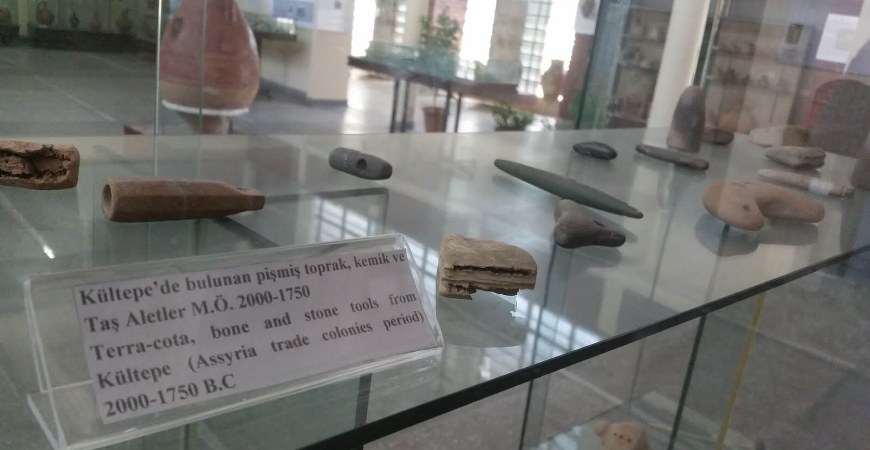Kayseri Archaeological Museum and Kultepe Museum in Turkey,
THE MUSEUMS OF KAYSERI
Steps were taken to gather museum objects before 192 and store them in Kayseri High School. But serious work only began in Kayseri in 1930 when the Hudavend Hatun Medrese, a Seljuk period building, was repaired and turned into a museum. The number of works increased until in 1938 they were put on exhibition and the museum opened to the public. When excavations at Kultepe were renewed in 1948 it was decided to build a new museum in order to house the finding of the excavations. The new building was begun in 1965 and completed in 1969. The archaeological works were moved to this new building while the ethnographic works from the Turkish-Islamic period remained in the old museum.
Kayseri Archaeological Museum:
The Kayseri Archaeological Museum Which is situated in the district of Gultepe in Kayseri and opened in 1969, consists of two exhibition rooms, and administrative and technical offices. The larger room contains Prehistoric Age ceramics, stone and bone objects, examples of finds from the Kultepe excavations, tablets, Hittite works, statues from Kululu, styles, and inscriptions. In the corridor connecting the two rooms are findings from the Hittite period, and in the small room are ceramics from the Phrygian, Roman and Byzantine period, glass and metal objects, statues, busts, styles and small objects arranged in chronological order. In the museum garden are lion statues brought from Golludag, sarcophagi, capitals, statues, bas-reliefs and building stones.
Kayseri Museum of Turkish and Islamic Art:
This museum was established in 1969 in the Hudavend Hatun Medrese Which had been a museum since 1938. The museum contains tiles, wooden and metal objects, manuscripts, inscriptions, carpets and kilims, copper objects, clothes and jewellery, embroidery and other ethnographic works from the Seljuk Beylikler and Ottoman periods.
Kultepe Museum:
Kultepe, formerly called Kanis, is about 20 km. away from Kayseri and 3 km. north cf the Sivas road. Excavations have been carried out in the Kultepe mound for 100 years, but the first systematic excavation was carried out by Prof. Dr. Tahsin Ozguc in 1948. In the market place (called a Karum), on the skirts of the Barrow were found cuneiform tablets and seals doting from the Assyrian Trade Colonies period. These were taken to the archaeological museums of Ankara and Kayseri. Four buildings were uncovered in the Karum, and it was determined that the Assyrian traders had lived here between 1950 and 1850 BC. The top building layer belongs to the Roman period, and below that to the Phrygian and Hittite periods. Underneath these were found Bronze and Copper Age remains. A local museum was built here in order to give more information about the Kultepe excavation site and was opened to the public in 1969. It consists of a large room in which findings from the excavations are arranged in chronological order. Among these are tablets, seals, and ceramic’s. There are also photographs and sketches of the Kultepe excavation.



































































































































